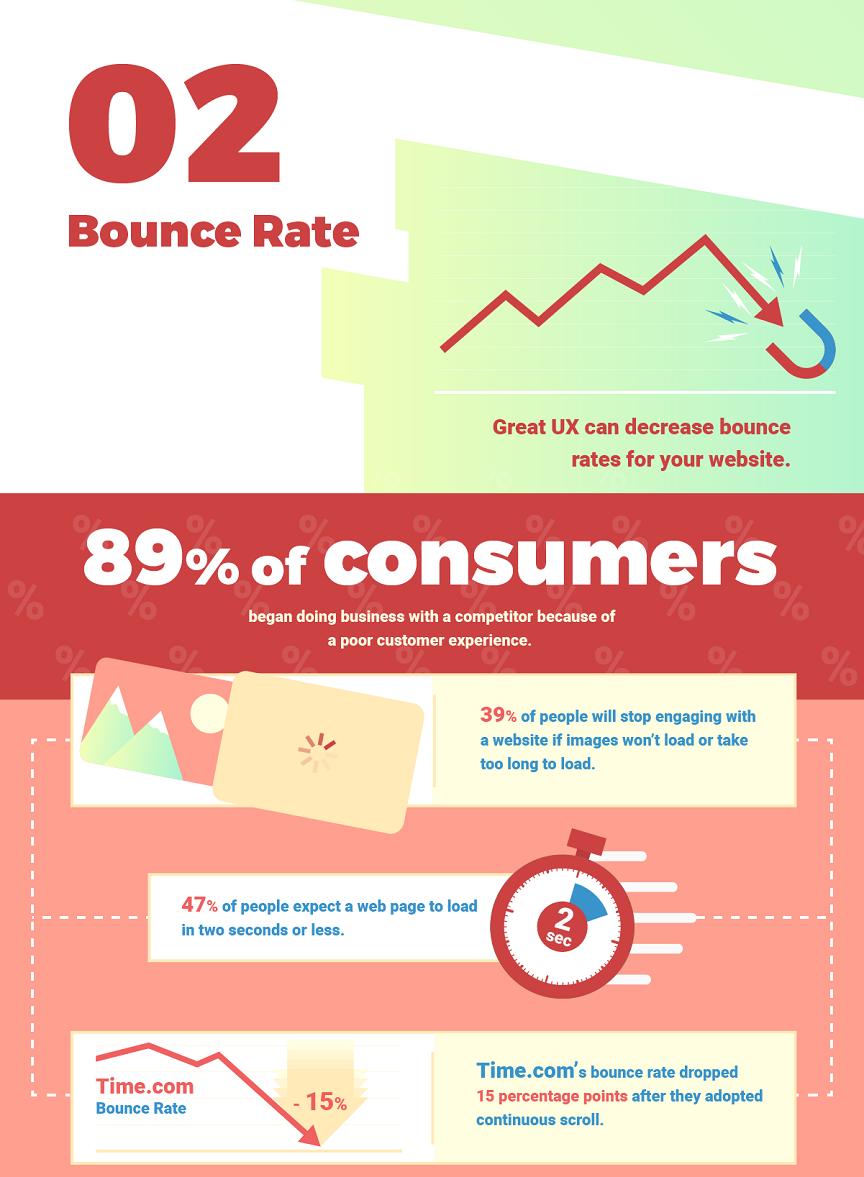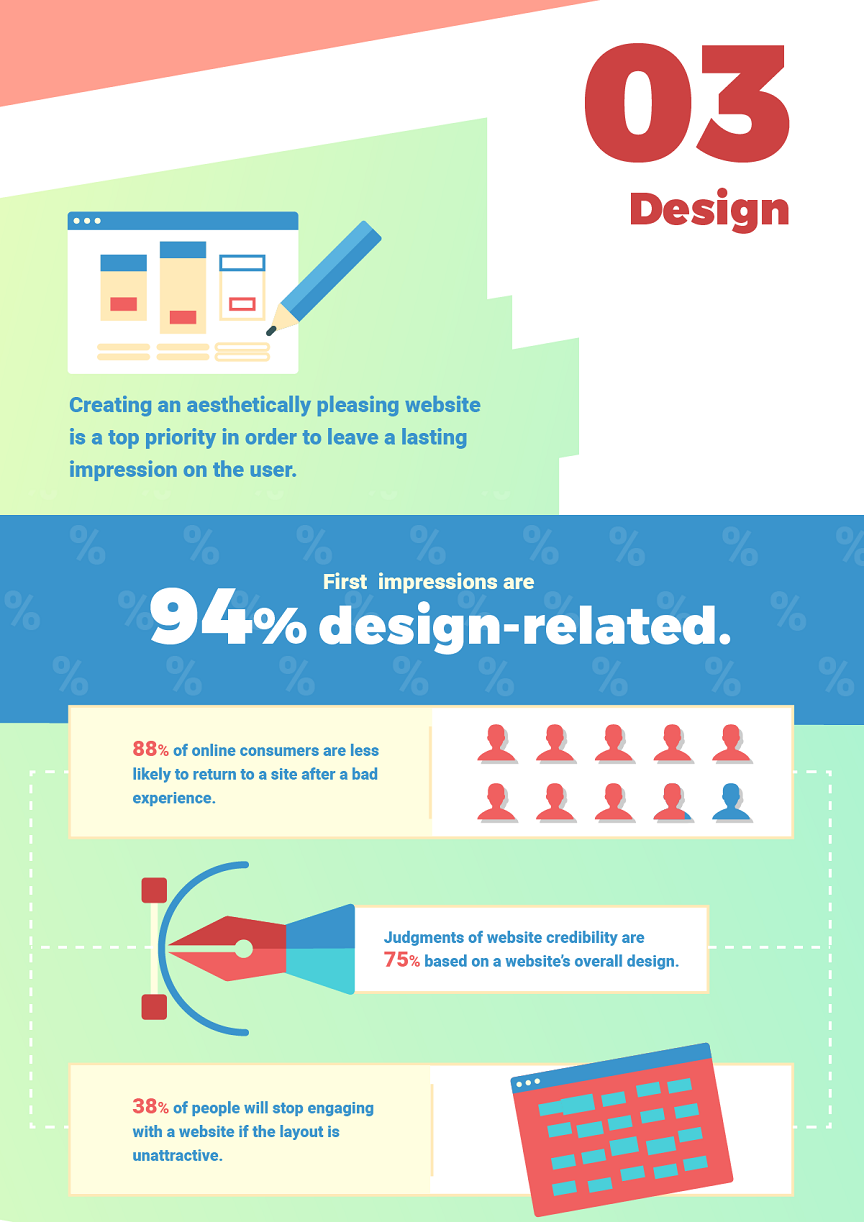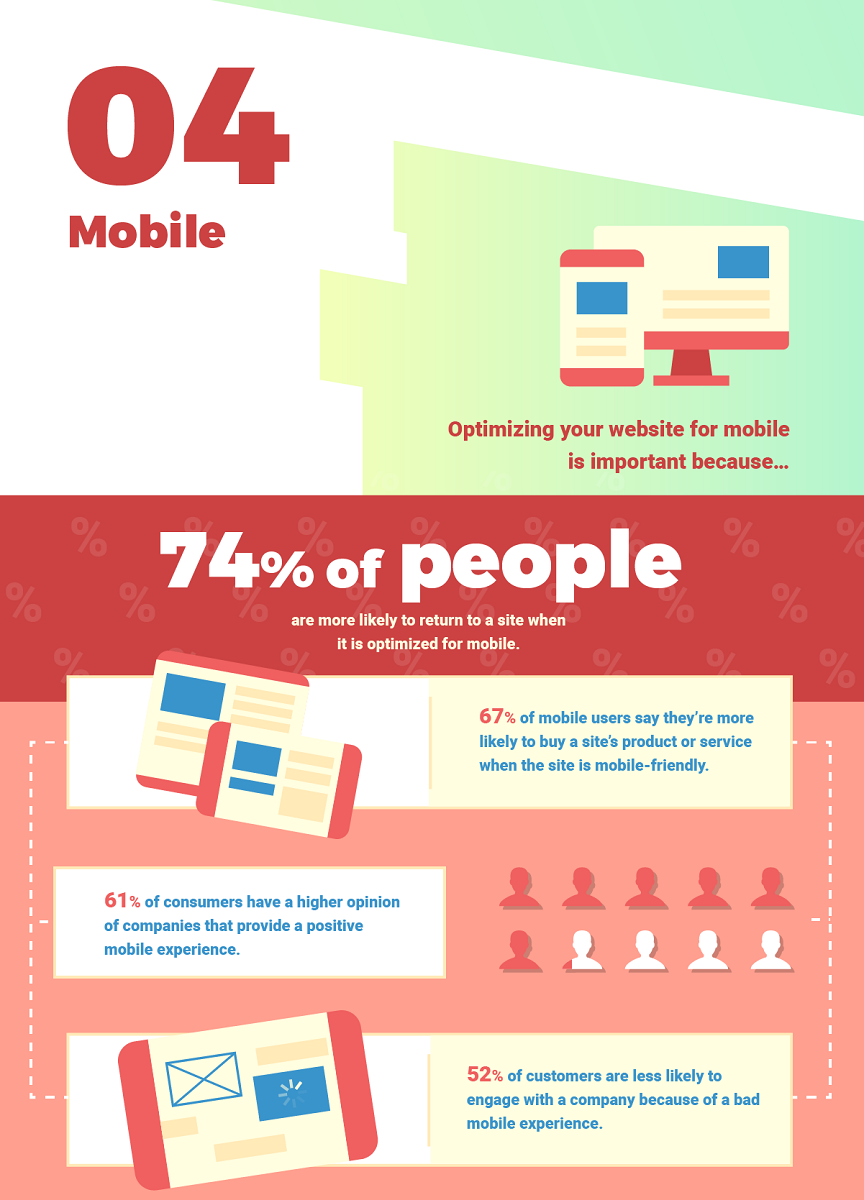User experience, also known as UX, is made up of many moving parts that allow it to positively impact how users feel when they visit your website.
Without a positive user experience, your marketing tactics can be affected, so it’s important to understand what exactly makes for a great UX design.
In this post, we’ll look at the various elements that great UX includes and how UX impacts your marketing goals and strategies.

Successful UX elements
UX is about more than the design and colors of your site.
Positive UX incorporates many factors, including value, usability, functionality, adaptability, navigation, and design. Each of these elements contributes to how functional your website is to users.
Value is determined based on whether or not potential buyers can easily see the benefit of your products or services. Your website design should clearly communicate the value of what you offer to visitors on your site.
Usability refers to the structure of your site and how responsive it is. Your site should be designed in a way that addresses your customer’s needs before they even realize they have them.
Functionality is a large part of UX because it ensures everything on your site makes sense. A potential customer should never have to ask themselves what the purpose of something on your site is.
Because we live in a world where people are constantly using their phones and tablets, adaptability of your site to any device is significantly important. The content on your site and its performance quality should be consistent whether the information is accessed from a desktop, iPad, or smartphone.
Navigation is about creating a layout that minimizes the number of clicks it takes for people to find things on your site. Users should not have to click more than two or three places to get to what they’re searching for.
The design of your site should draw visitors in without distracting them from your content. The goal is to grab their attention by creating an aesthetically pleasing design, without making them forget why they came to your site in the first place.
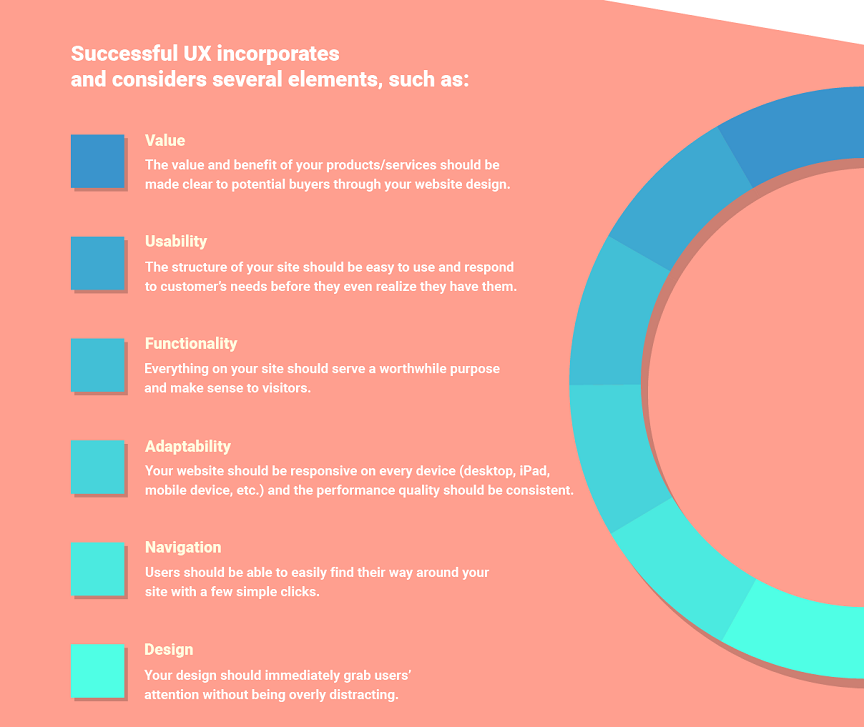
Return-on-investment (ROI)
Your ROI increases significantly when you invest in a strong, worthwhile UX strategy.
- For every dollar invested in UX, there’s $100 in return – that’s an ROI of 9,900%.
- In 10 years, a $10,000 investment in design-centric companies would yield returns 228% greater than the same investment in the S&P.
- 86% of buyers will pay more for a better customer experience.
- ESPN.com profits increased 35% after they listened to their fan base and incorporated suggestions into their homepage redesign.
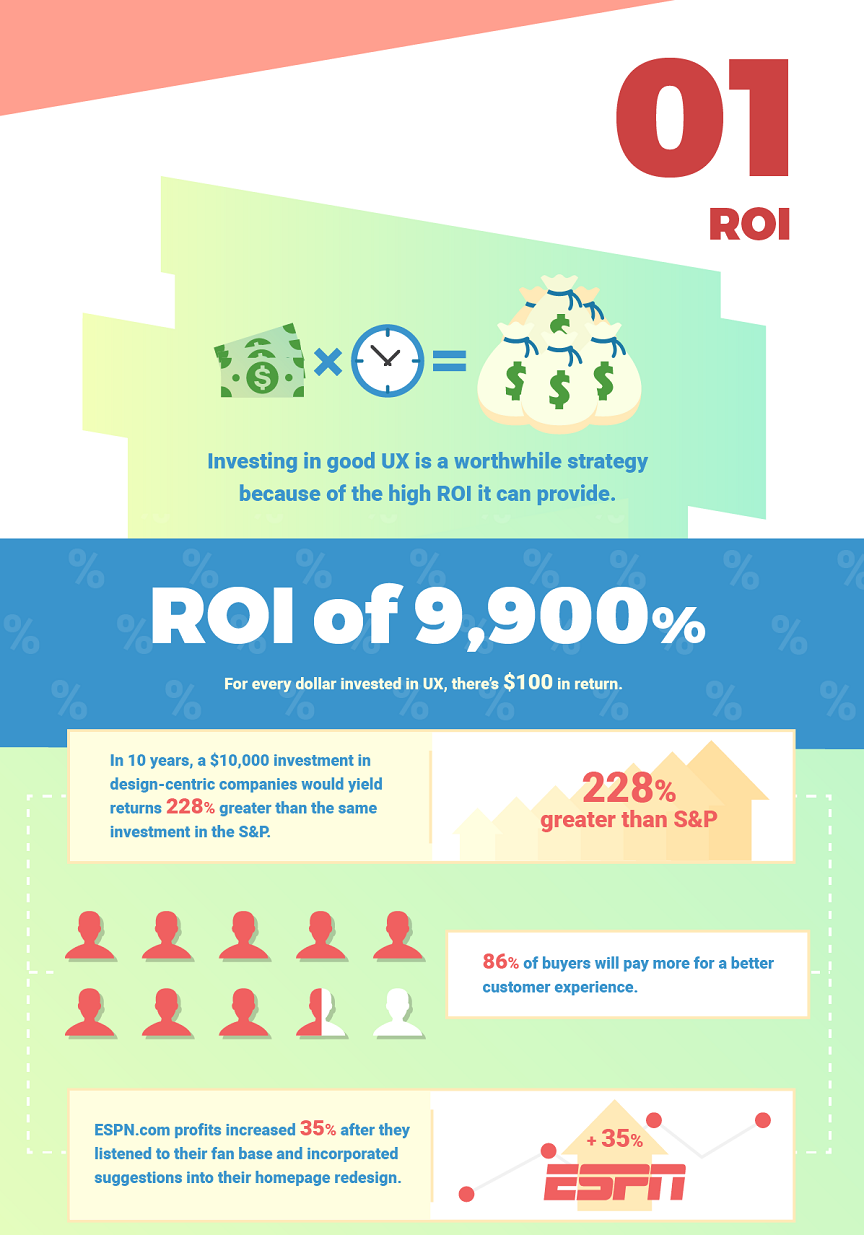
So, if good UX increases your sales, what does UX mean for bounce rates?
Bounce Rate
Does UX affect the bounce rate on your site?
You bet it does.
UX done well can decrease bounce rates significantly for your website! The numbers speak for themselves:
- 89% of consumers began doing business with a competitor because of a poor customer experience.
- 39% of people will stop engaging with a website if images won’t load or take too long to load.
- 47% of people expect a web page to load in two seconds or less.
- Time.com’s bounce rate dropped 15 percentage points after they adopted continuous scroll.
Design
Throw a few colors you think are nice on your site and you’re good to go, right?
Not quite.
The design of your site should be well-thought out and researched to see what people respond positively to. Design goes along way; just let these statistics sink in:
- First impressions are 94% design-related.
- 88% of online consumers are less likely to return to a site after a bad experience.
- Judgments of website credibility are 75% based on a website’s overall design.
- 38% of people will stop engaging with a website if the layout is unattractive.
Mobile
People are constantly on their phones. Which means it’s a high possibility when they access your site, it will be from their phone.
Not having your site optimized for mobile may seem like no big deal, but the reality is it can make a huge difference. When a site isn’t mobile-friendly images become distorted or don’t appear, text is either too small to read or doesn’t fit on the screen, and information becomes difficult to find.
Optimizing your site for mobile matters because:
- 74% of people are more likely to return to a site when it is optimized for mobile.
- 67% of mobile users say they’re more likely to buy a site’s product or service when the site is mobile-friendly.
- 61% of consumers have a higher opinion of companies with a positive mobile experience.
- 52% of customers are less likely to engage with a company because of a bad mobile experience.
Are you doing UX successfully for your site?
In order to market your business successfully and accomplish your goals, user experience is a major part of the equation.
If you found this infographic helpful or have any UX tips of your own, let us know in the comments below!
Don’t forget to share this infographic and remember to consider the various elements of UX when building your site!
The post Why User Experience Matters to Marketing appeared first on WebpageFX Blog.
Related Posts
July 6, 2017
5 Ways Web Design Impacts Customer Experience
September 6, 2016


